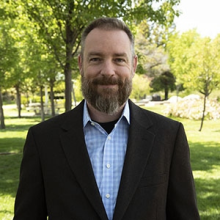-
Title
Staff Scientist -
Email
harke2@llnl.gov -
Phone
(925) 423-5848 -
Organization
Not Available
Research Interests
- Astrophysics
- Cosmology
- Experimental gravitational detection methods
- Fundamental tests of the standard model of particle physics and cosmology
- Physics of isomer population and decay modes
Background
Jason Harke completed both a pure and applied science and a physics technology program at John Abbott College before continuing his studies at Concordia University in Montreal. As an undergraduate, he interned at the National Research Council of Canada in the fields of mass metrology, ionization radiation standards, opto-electronics, and the femtosecond science group. He was a visiting scholar and PhD student at Lawrence Berkeley National Laboratory, where he performed high precision tests of the standard model of particle physics, specifically testing the unitarity of the CKM Matrix using radioactive beams he developed for his PhD thesis. After receiving his PhD, he joined what is now the Nuclear & Particle Physics group at LLNL.
At LLNL, Harke has developed alternative techniques to obtain cross sections of short-lived isotopes for basic and applied science needs, working with critical assemblies to obtain data on short lived fission product yields and performing table top precision measurements for studying isomer population and decay properties. His team developed the Hyperion charged particle gamma-ray array, the DEATH-STAR array, and the NeutronSTARS array. Harke served on the LLNL Postdoc Committee for over a decade and is the LLNL Technical Coordinator for the International Agreement on Cooperation in Fundamental Science Supporting Stockpile Stewardship. He is also an adjunct faculty member at Kansas State University and a Courtesy Faculty Member at Oregon State University and has mentored over 30 postdocs, graduate students, and summer students.
Ph.D., Physics, University of California, Berkeley, 2004
M.A., Physics, University of California, Berkeley, 2002
B.S., Honours Physics Co-op, Concordia University, 1997
- One-nucleon pickup reactions and compound-nuclear decays, J. E. Escher*, J. T. Burke, R. J. Casperson, R. O. Hughes, and N. D. Scielzo, EPJ Web of Conferences 178, 03002 (2018).
- Accurate measurement of the first excited nuclear state in 235U, F. Ponce, E. Swanberg, J. Burke, R. Henderson, and S. Friedrich, Physical Review C 97, 054310 (2018).
- The hyperion particle-γ detector array, R. O. Hughes, J. T. Burke, R. J. Casperson, S. Ota, S. Fisher, J. Parker, C. W. Beausang, M. Dag, P. Humby, J. Koglin, E. McCleskey, A. B. McIntosh, A. Saastamoinen, A. S. Tamashiro, E. Wilson, and T. C. Wu, NIMA 856, 47 (2017).
- NeutronSTARS: A segmented neutron and charged particle detector for low-energy reaction studies, O. A. Akindele, R. J. Casperson, B. S. Wang, J. T. Burke, R. O. Hughes, S. E. Fisher, A. Saastamoinen, E. B. Norman, NIMA 872, 112 (2017).
- DEATH-STAR: Silicon and Photovoltaic Fission Fragment Detector Arrays for Light-Ion Induced Fission Correlation Studies, J. D. Koglin, J. T. Burke, S. E. Fisher, and I. Jovanovic, NIMA 854, 64 (2017).
- Compound-nuclear reaction cross sections from surrogate measurements, Jutta E. Escher, Jason T. Burke, Frank S. Dietrich, Nicholas D. Scielzo, Ian J. Thompson, and Walid Younes, Reviews of Modern Physics 84, 353, (2012).
- Reaction Rate Sensitivity of 44Ti Production in Massive Stars and Implications of a Thick Target Yield Measurement of 40Ca(α, γ)44Ti, The Astrophysical Journal 715(2), (2010).
- Two NNSA-HQ Certificate of Appreciation Awards
- Four Physical and Life Sciences Directorate Awards
- Two Global Security Directorate Awards
- Two LLNL Spot Awards


